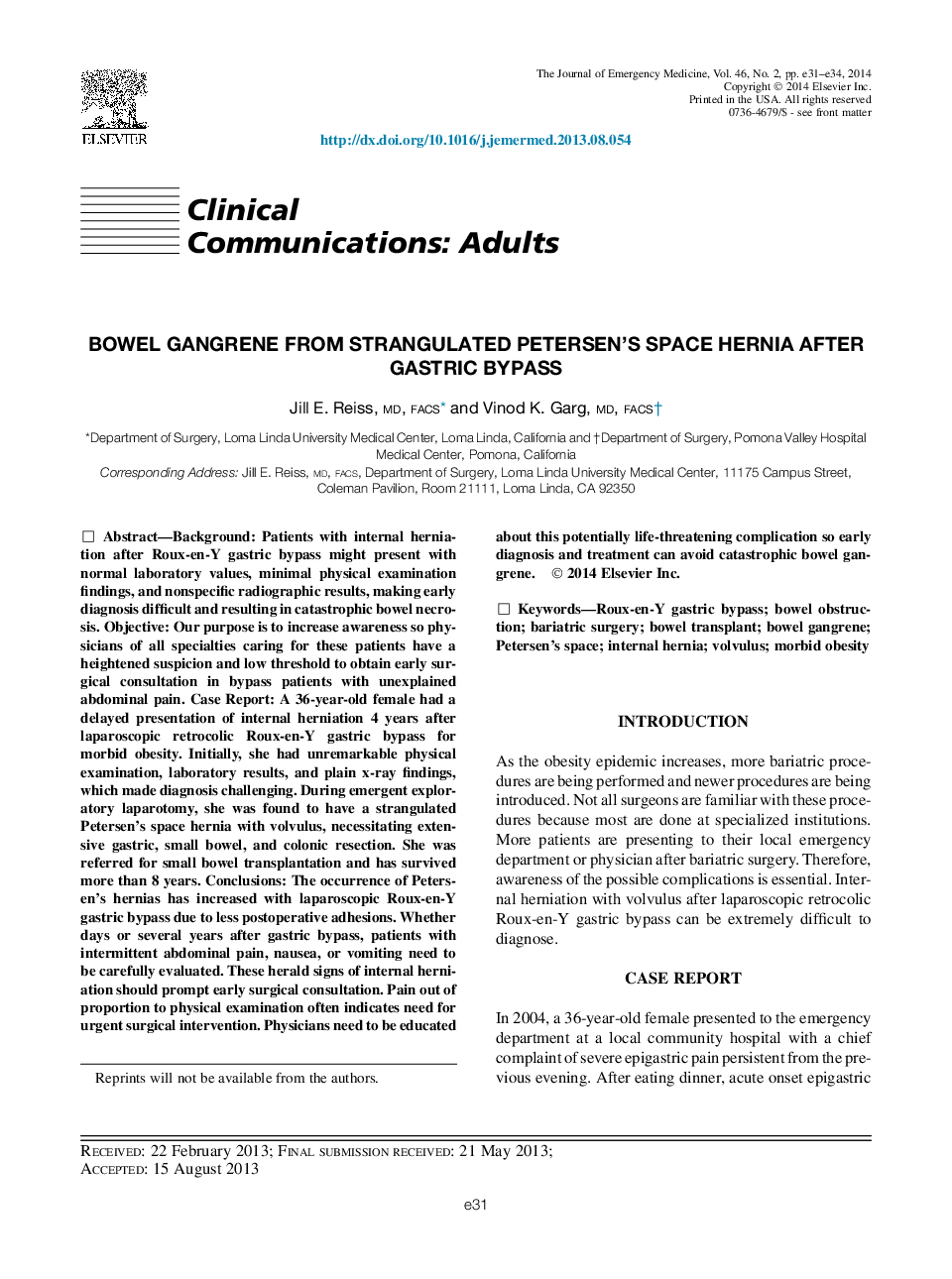| Article ID | Journal | Published Year | Pages | File Type |
|---|---|---|---|---|
| 3248033 | The Journal of Emergency Medicine | 2014 | 4 Pages |
BackgroundPatients with internal herniation after Roux-en-Y gastric bypass might present with normal laboratory values, minimal physical examination findings, and nonspecific radiographic results, making early diagnosis difficult and resulting in catastrophic bowel necrosis.ObjectiveOur purpose is to increase awareness so physicians of all specialties caring for these patients have a heightened suspicion and low threshold to obtain early surgical consultation in bypass patients with unexplained abdominal pain.Case ReportA 36-year-old female had a delayed presentation of internal herniation 4 years after laparoscopic retrocolic Roux-en-Y gastric bypass for morbid obesity. Initially, she had unremarkable physical examination, laboratory results, and plain x-ray findings, which made diagnosis challenging. During emergent exploratory laparotomy, she was found to have a strangulated Petersen's space hernia with volvulus, necessitating extensive gastric, small bowel, and colonic resection. She was referred for small bowel transplantation and has survived more than 8 years.ConclusionsThe occurrence of Petersen's hernias has increased with laparoscopic Roux-en-Y gastric bypass due to less postoperative adhesions. Whether days or several years after gastric bypass, patients with intermittent abdominal pain, nausea, or vomiting need to be carefully evaluated. These herald signs of internal herniation should prompt early surgical consultation. Pain out of proportion to physical examination often indicates need for urgent surgical intervention. Physicians need to be educated about this potentially life-threatening complication so early diagnosis and treatment can avoid catastrophic bowel gangrene.
